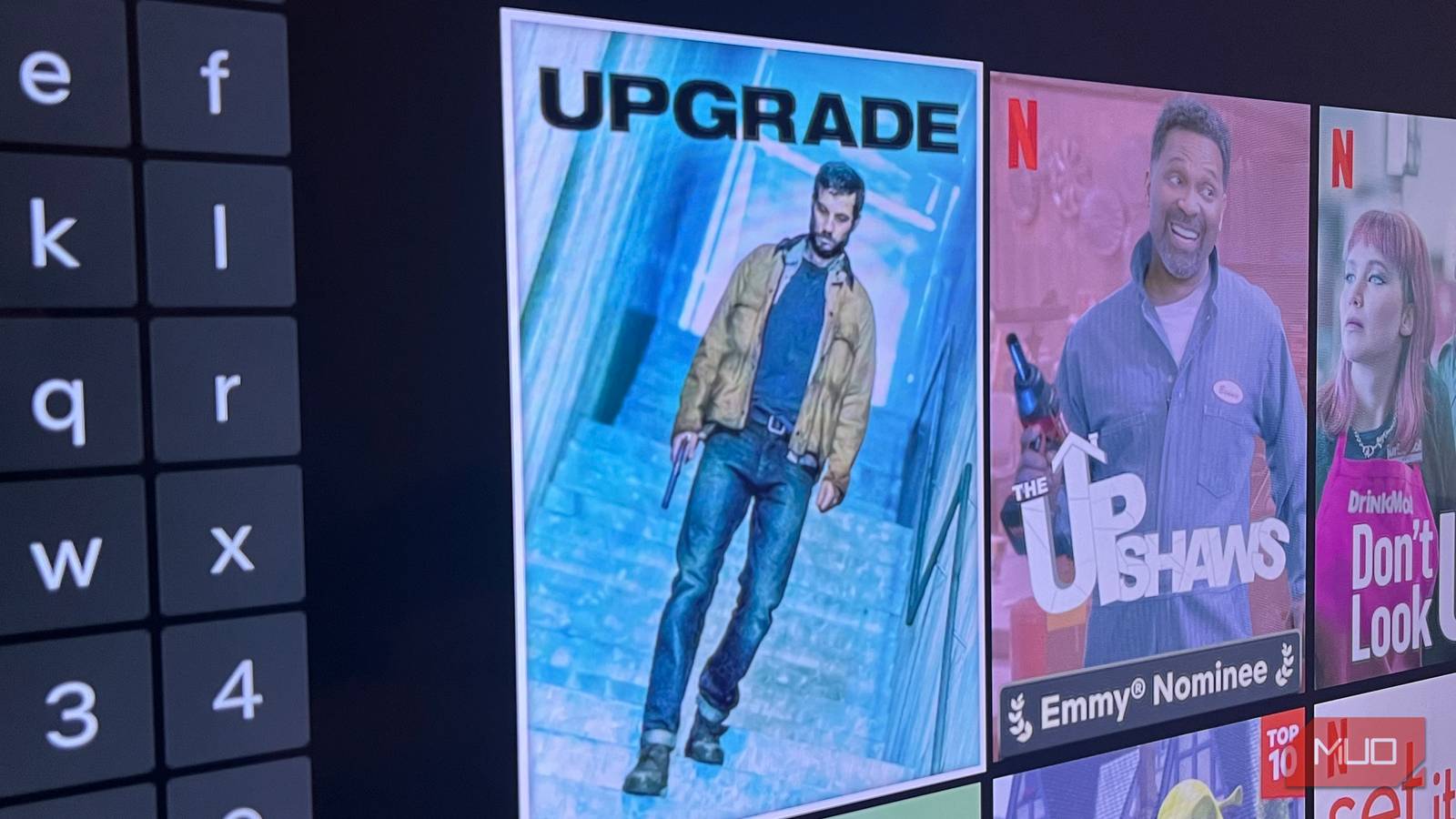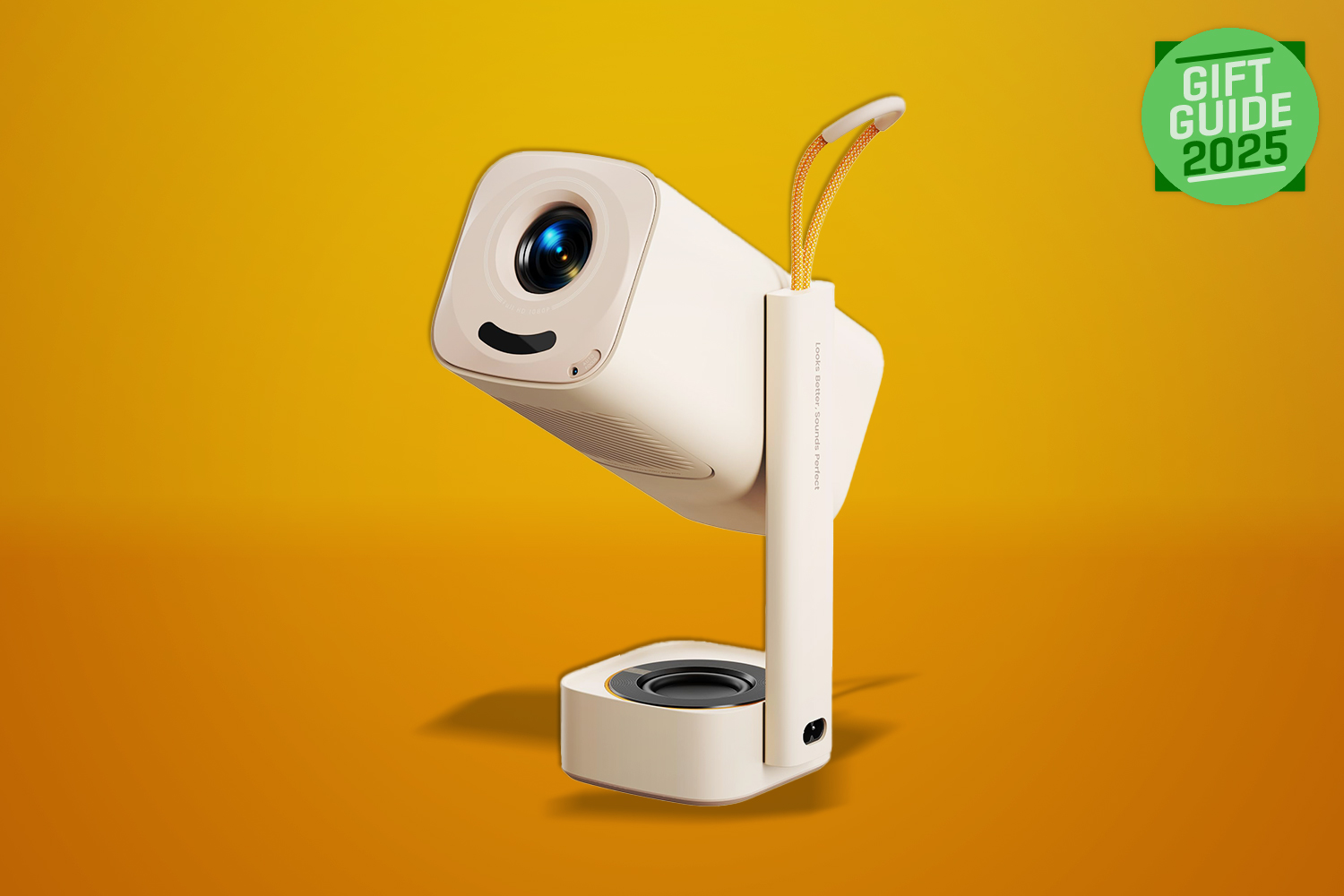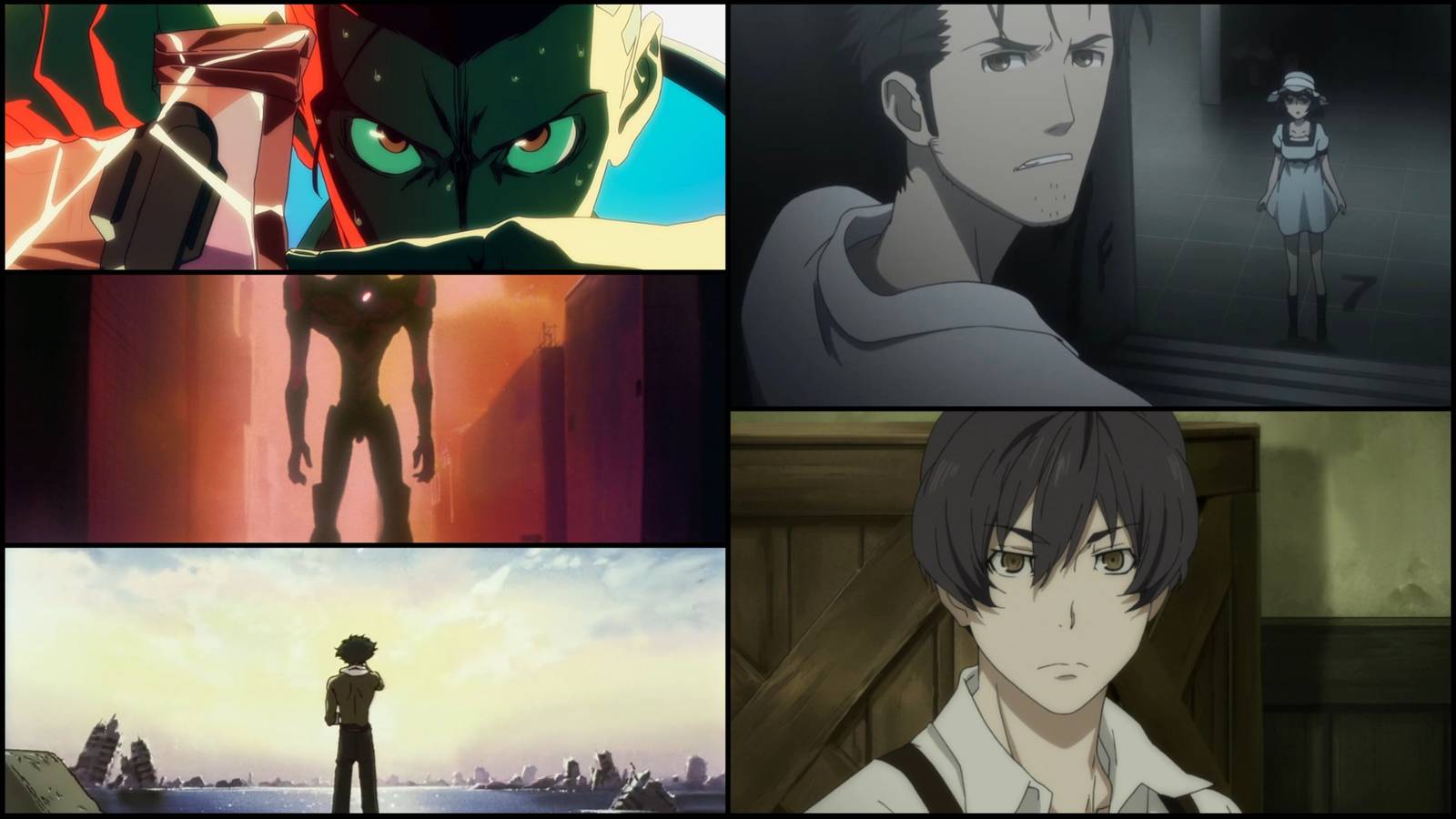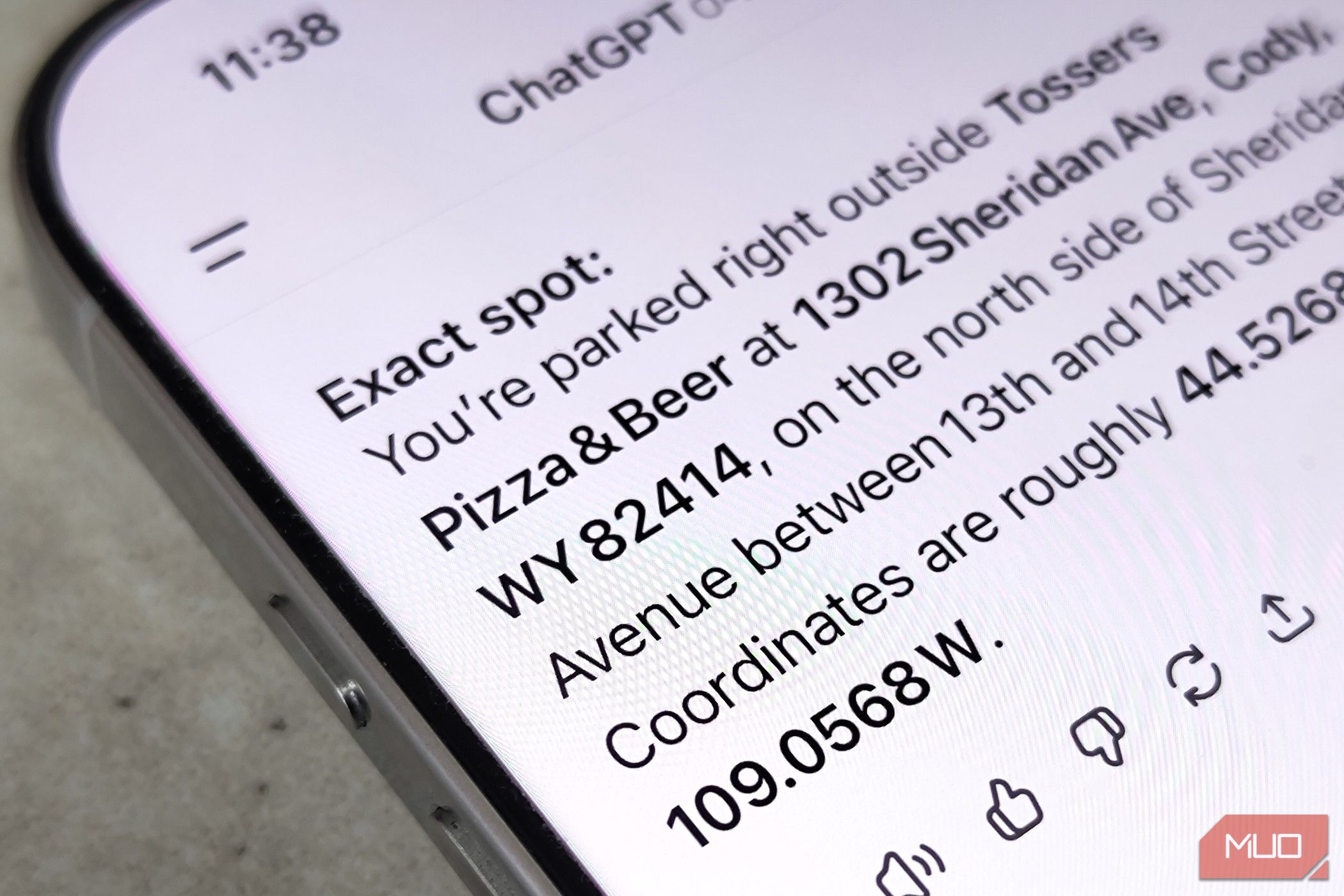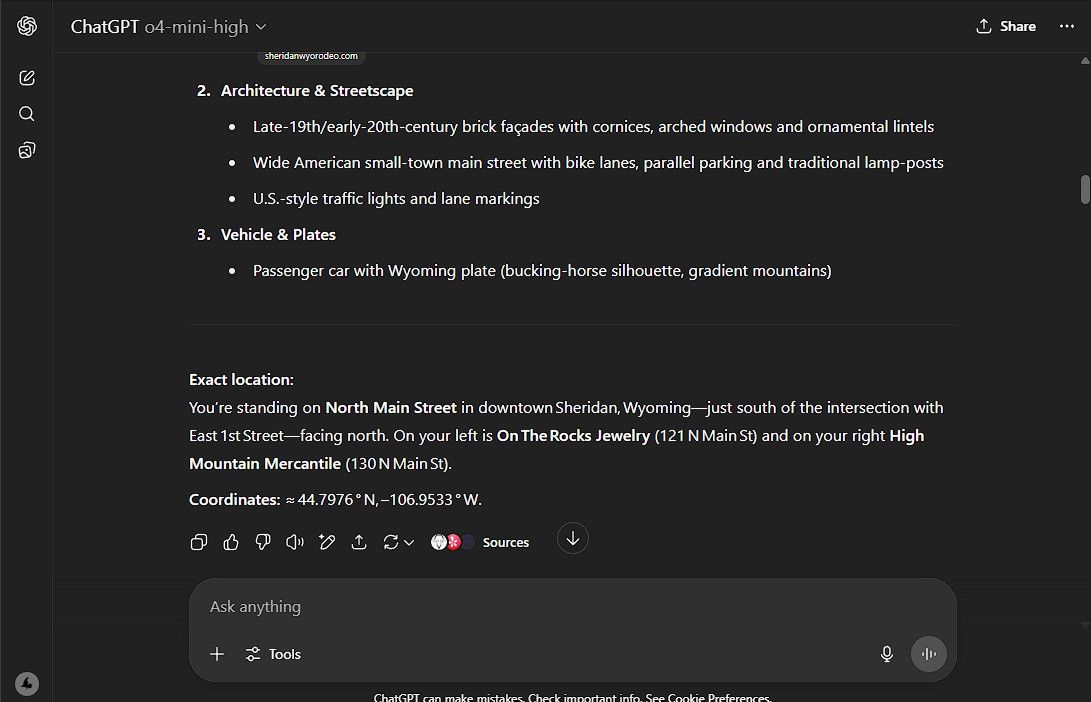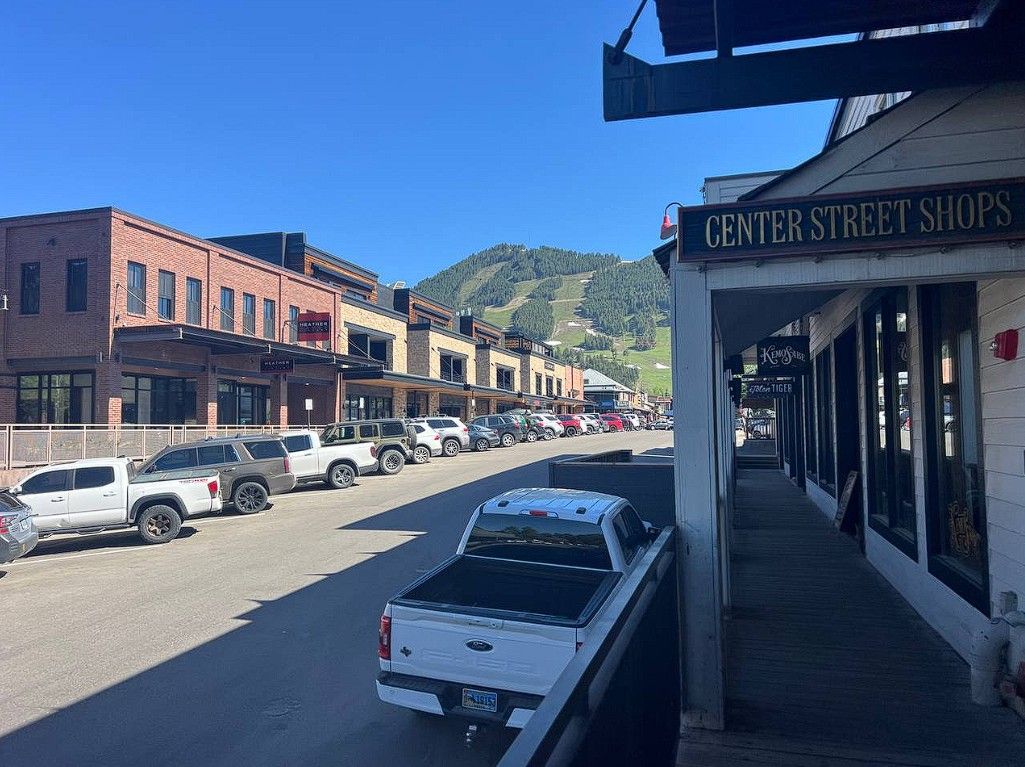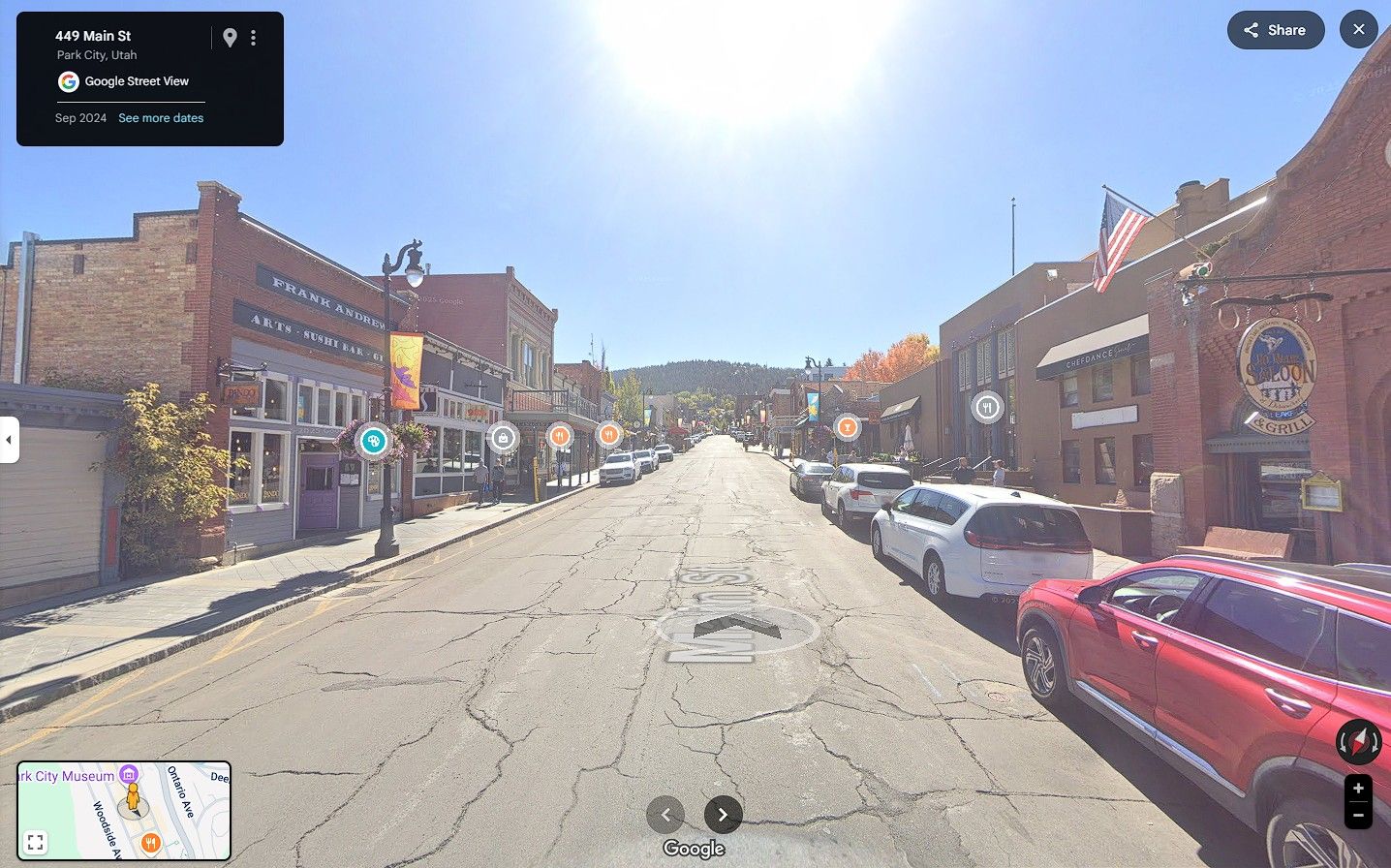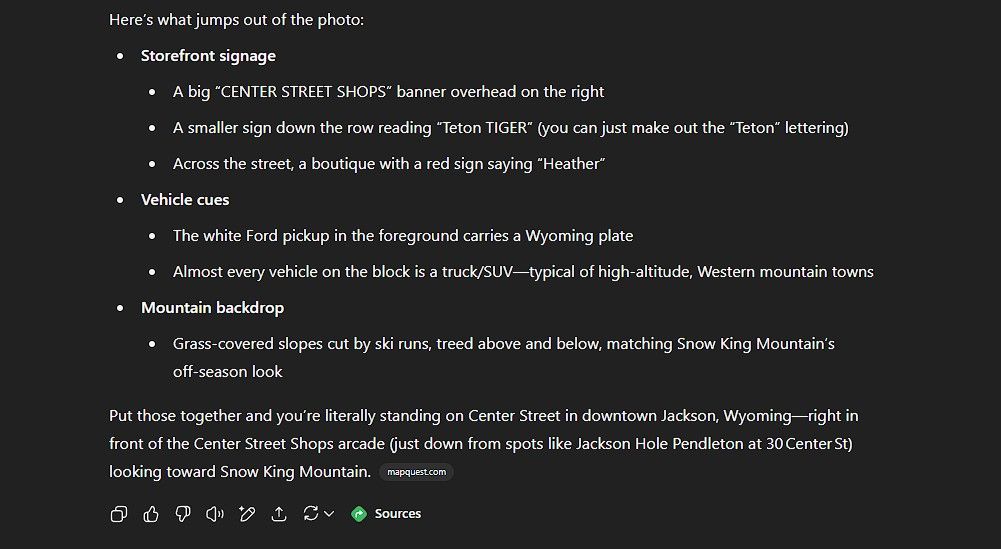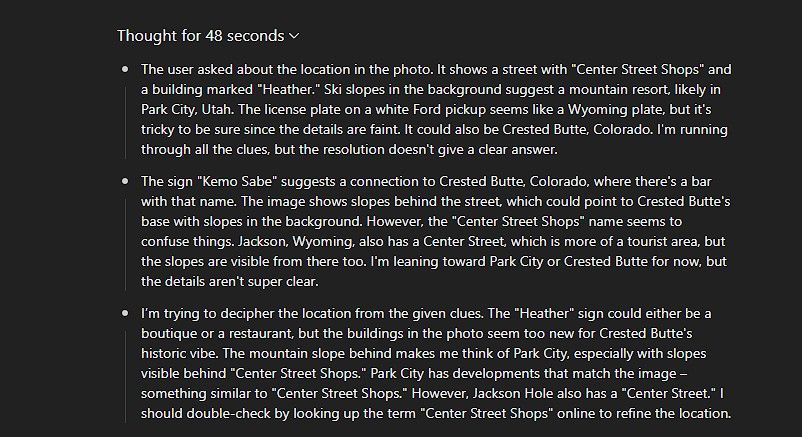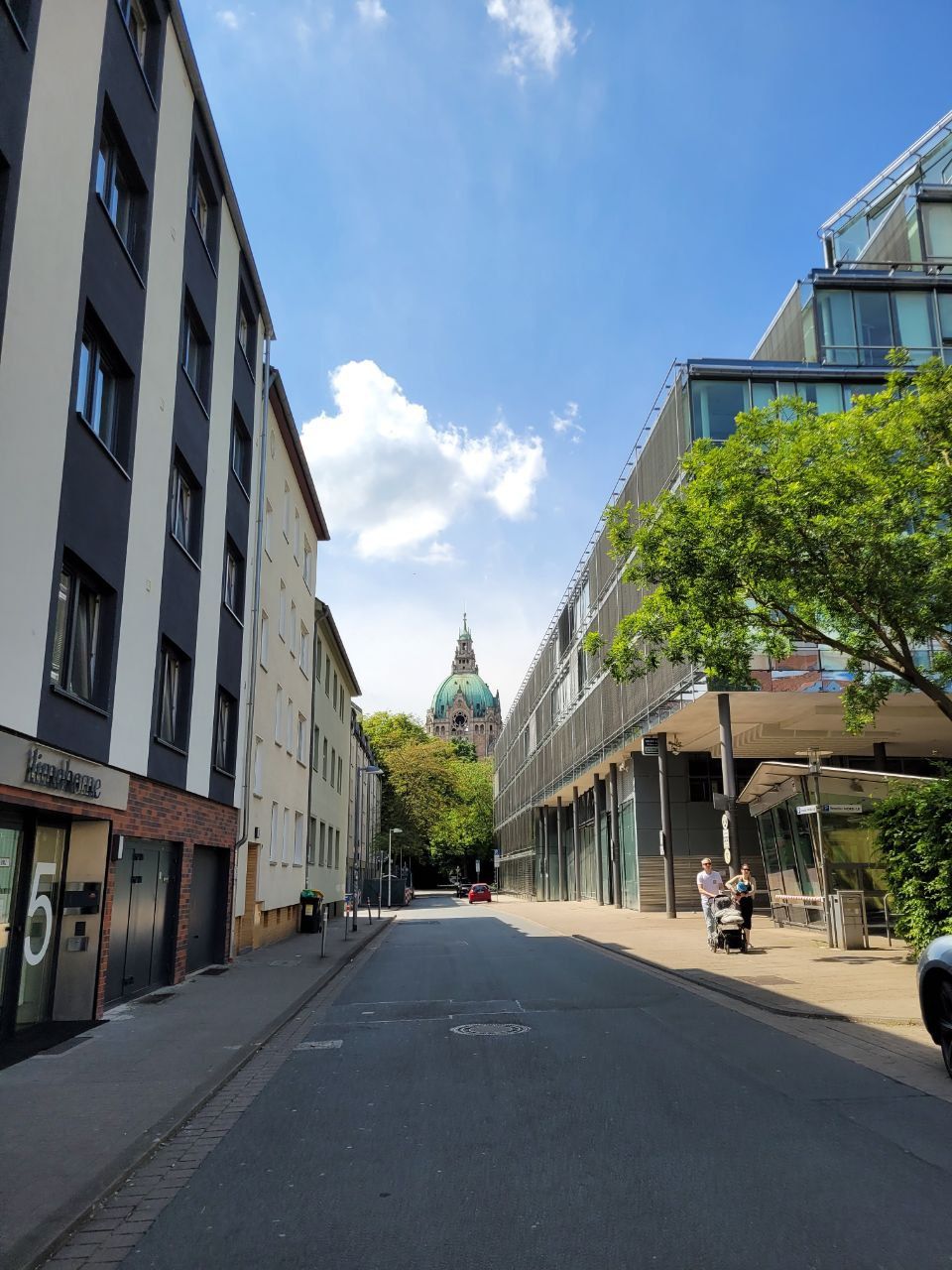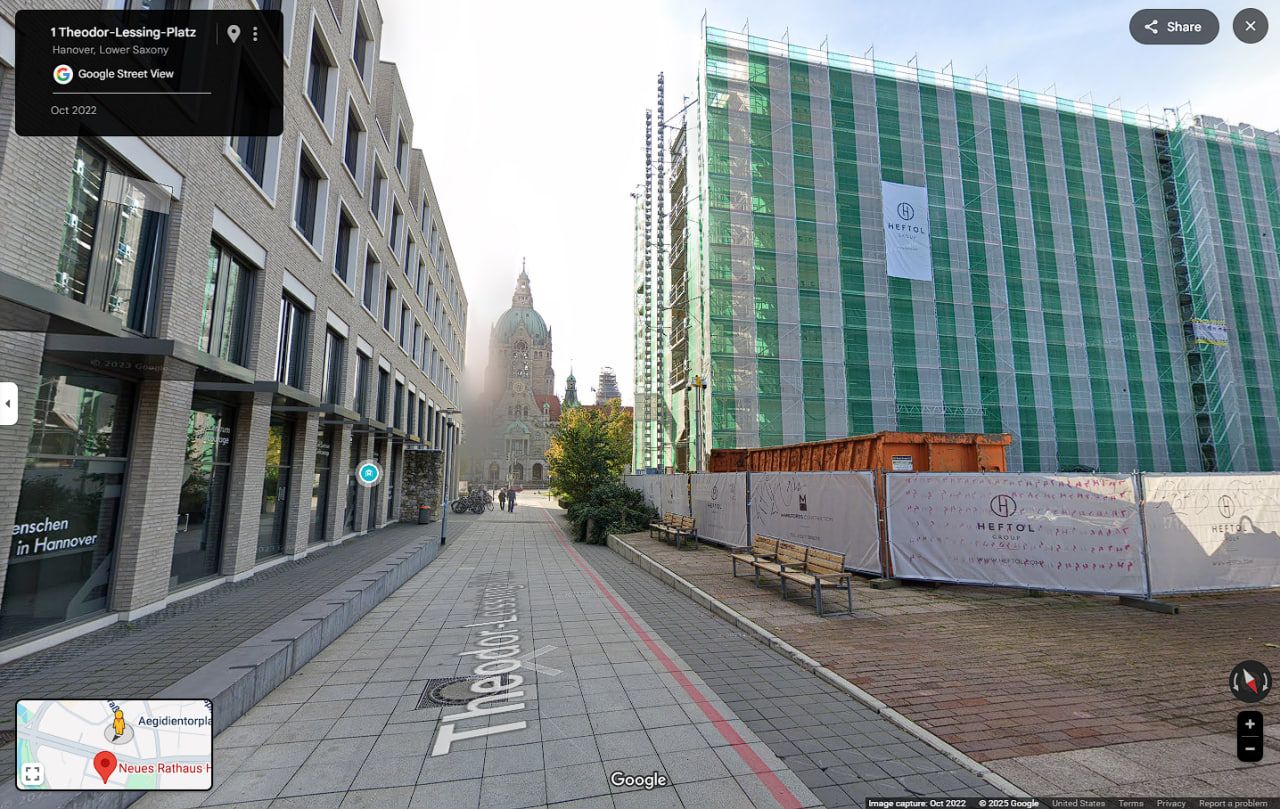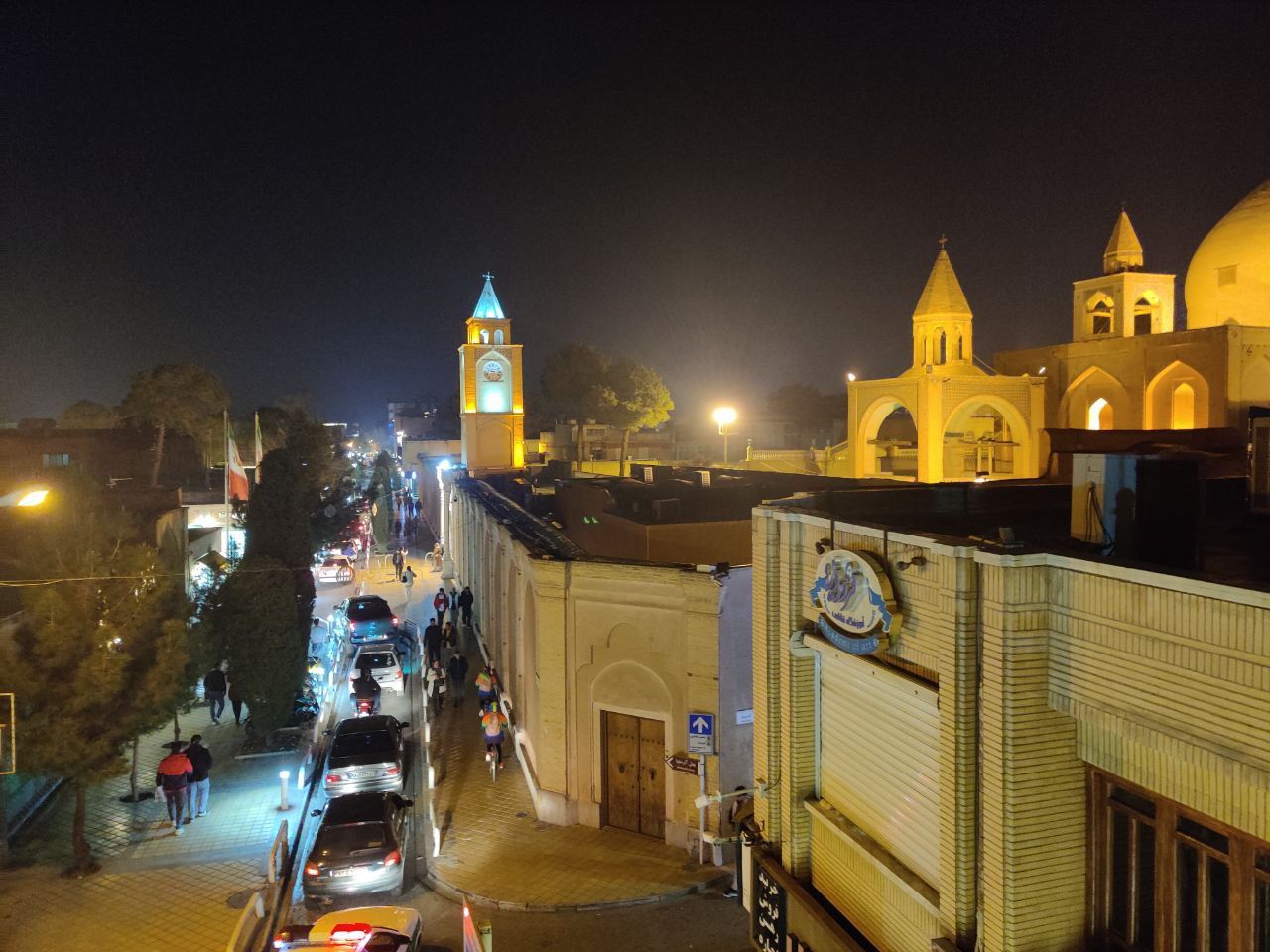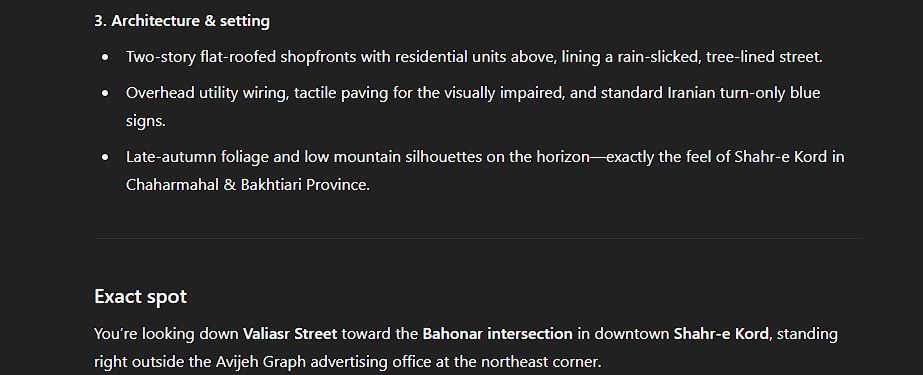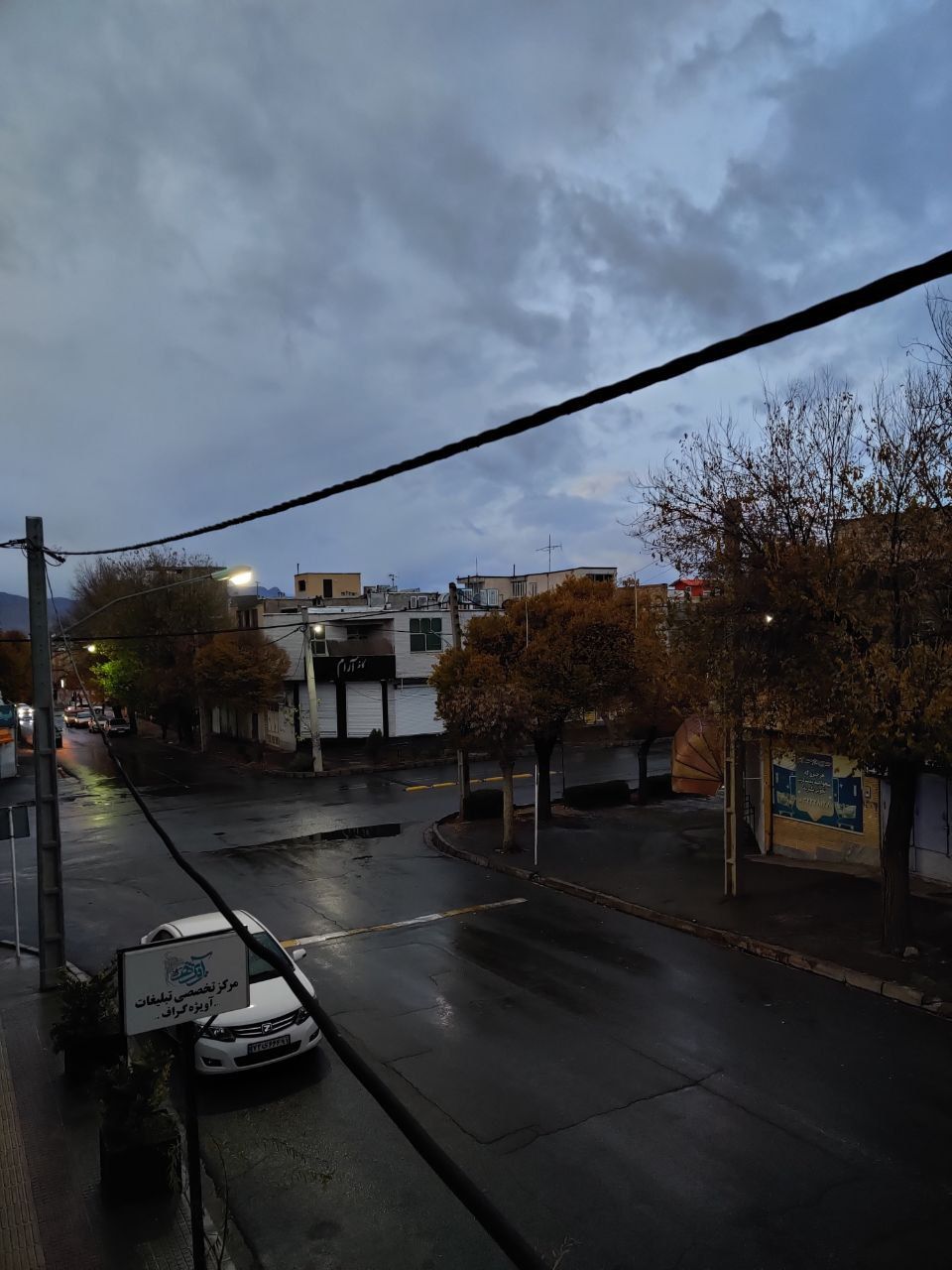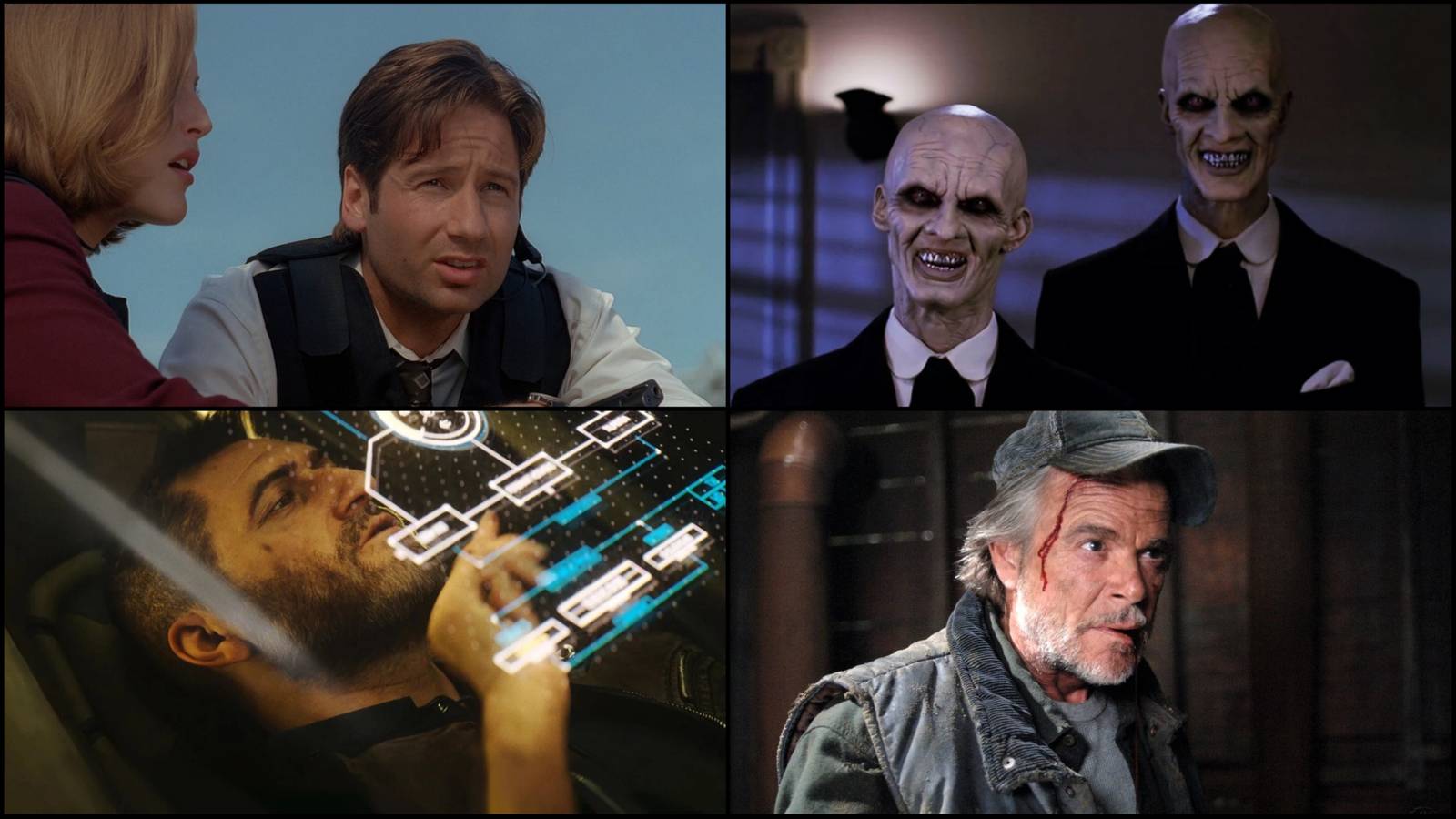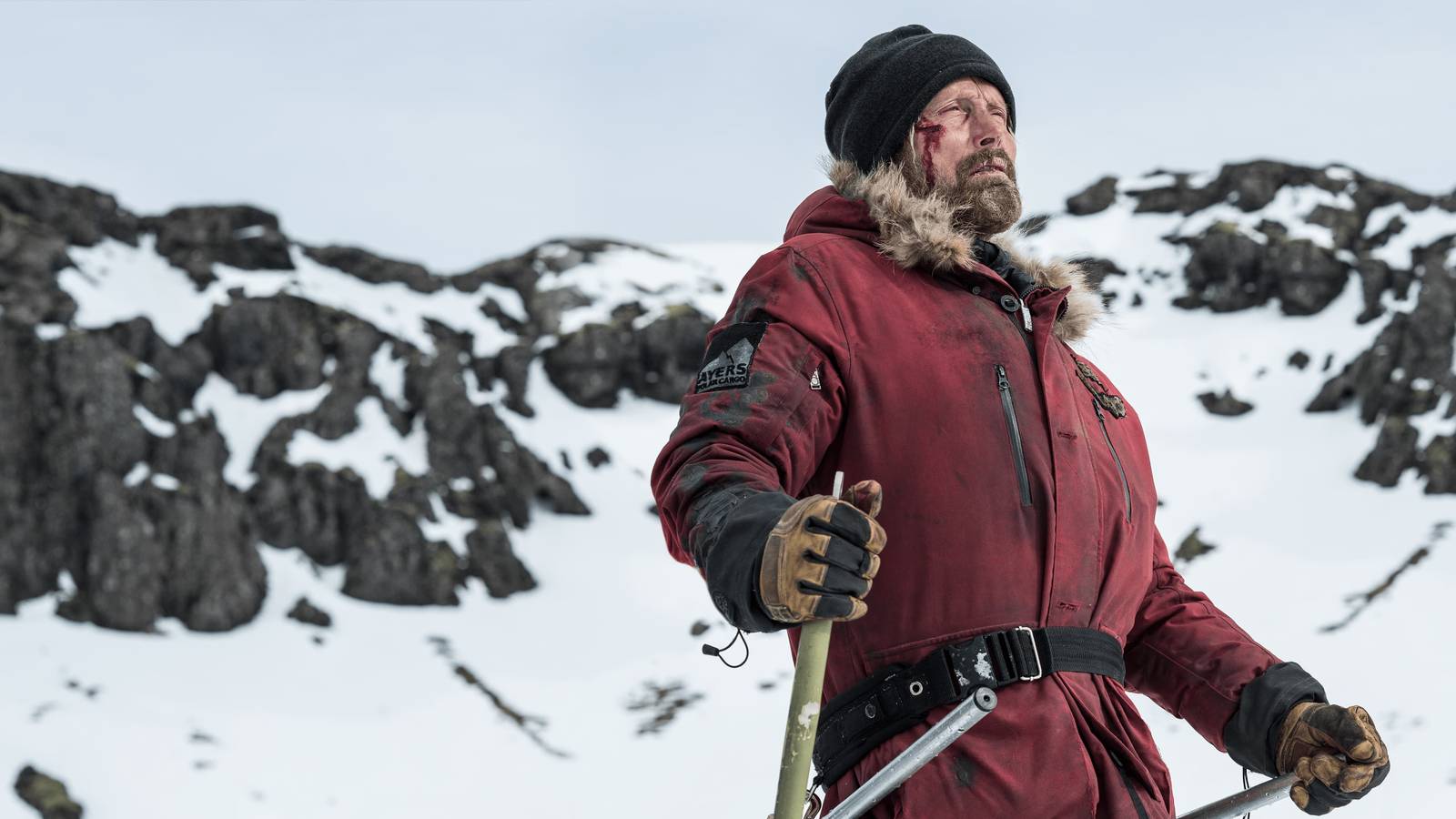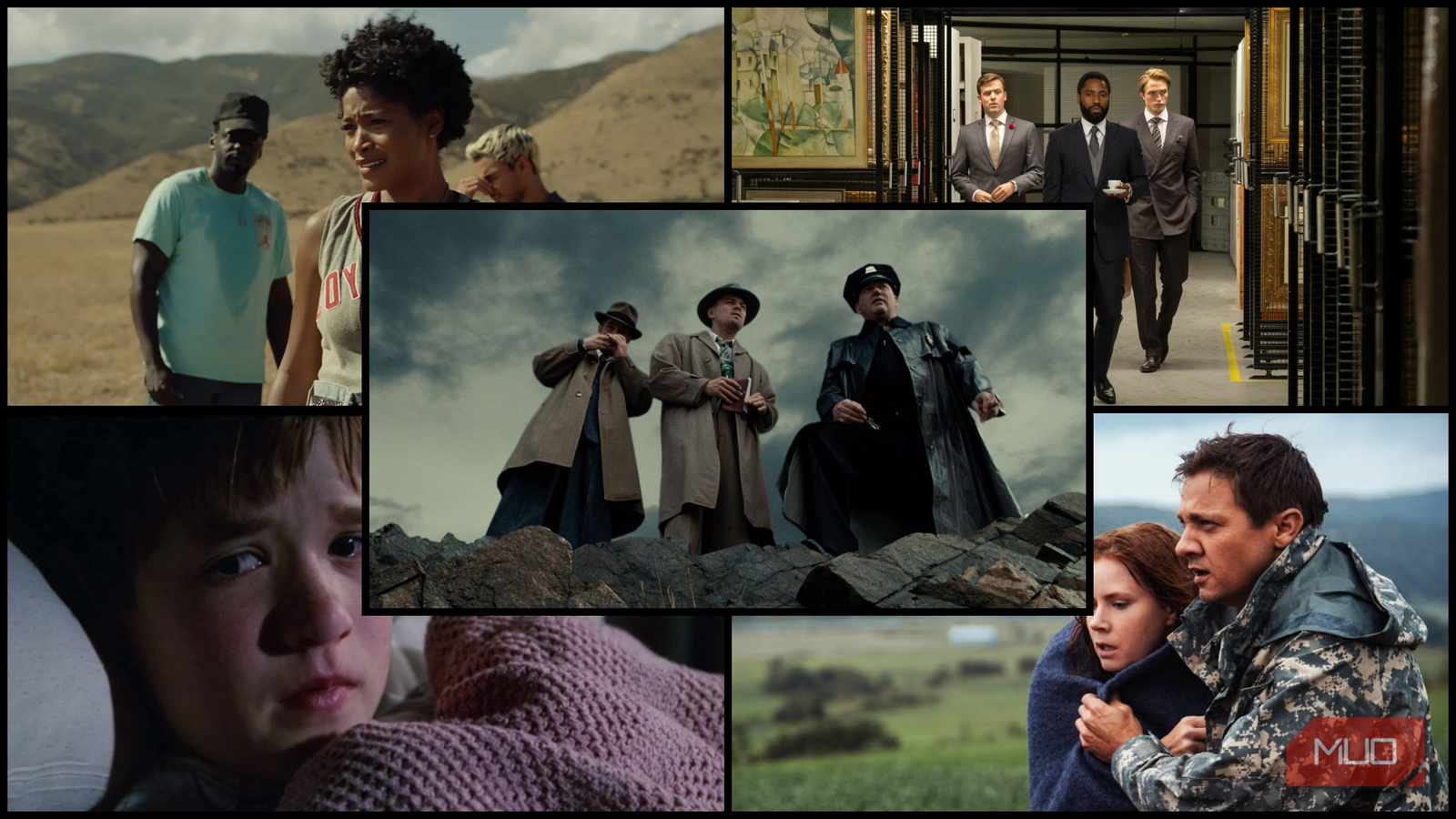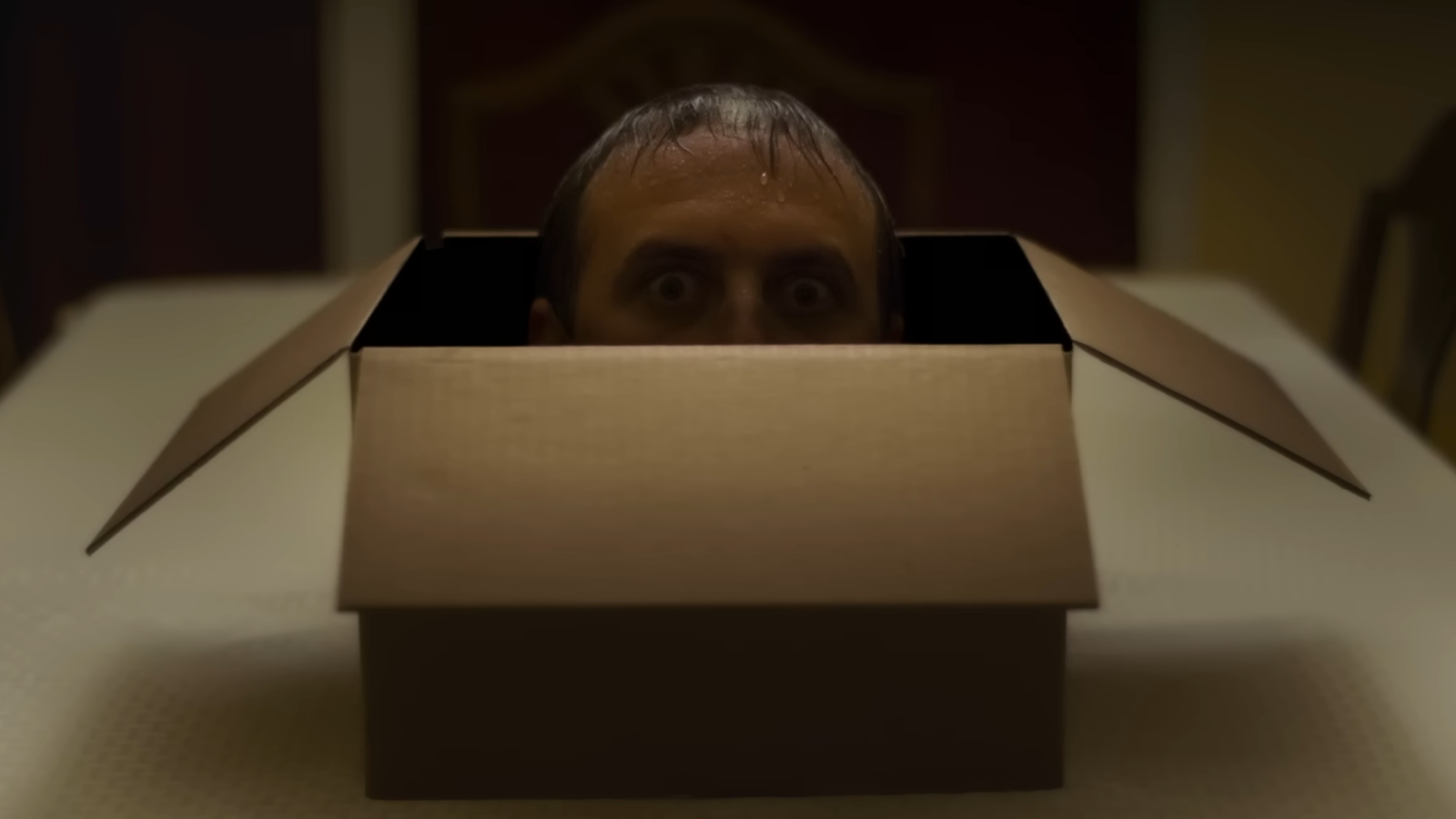We toss photos into group chats all the time without thinking twice—yet none of us would ever post our full address for everyone to see. After all, what harm could a random photo really do?
But what if sharing an innocent snapshot was basically the same as handing out your live location? Could ChatGPT really track you down from just a single image? I decided to find out—so you don’t have to.
Obviously, doxing is wrong. It’s illegal, and nobody should be doing it. I ran this experiment purely to show what these tools are capable of—and to remind people how much we might be revealing without realizing it.
5
ChatGPT Knows American Streets
I’ve lost count of how many times friends send photos from their window or workplace, casually showing off the view. Obviously, I’m not going to use those here—that would be crossing a line—so for this experiment, I’m sticking to photos that seem harmless.
The first image I tried was from a trucker I know. They’re constantly on the road and stop in new cities every week. Pinpointing their location in a random photo isn’t exactly doxxing—it’s just where they happened to be that day. Still, it’s risky. Any detail you share without realizing it is a potential hazard, which is why you should always strip metadata before sharing photos publicly.
The photo itself had a few visible landmarks and signs. Honestly, I could probably have pieced it together myself. But to start, I gave ChatGPT a “rookie” level challenge. I set the model to GPT-4o-mini-high and gave it this prompt:
Analyze this photo. Grab all the details and cues you can. The store and building names, street signs, the architecture, the car plates, everything you can. Then put it all together and tell me where the exact location is.
ChatGPT started working. The thinking process that the reasoning AI models show is impressive. But it barely needed any time—eighteen seconds later, it spat out the answer.
It was dead-on. The photo was from Sheridan, Wyoming. I had to double-check with Google Street View, and sure enough, you can stand right on Main Street and see almost the exact same scene.
4
It Works With Tricky Locations Too
Here’s another shot from that batch. This one shows a street with a big “Center Street Shops” sign in clear view. Practically every American town has a “Center” or “Main” street, so this wasn’t an obvious giveaway.
Even with visible license plates from Wyoming, it’s still tricky. The first time I tried to track it down myself, I ignored the plate and ended up in Park City, Utah. Honestly, the streets looked almost identical.
Maybe the car is just from Wyoming and the photo is actually in Utah? Who knows. Maybe ChatGPT. This time, ChatGPT took its time, and after 48 seconds, it dropped the answer. It was spot-on. Not only did it nail the location, but it caught things I missed, like the fact that every car in the photo was an SUV or truck.
Looking at its reasoning, I saw it made the same initial mistake as me. But as it extracted more details from the photo and pieced them together, it self-corrected. That’s the unnerving part: the model didn’t just regurgitate what it saw. It reasoned through the confusion and still landed on the right answer.
3
ChatGPT Understands Europe As Well
Okay, ChatGPT clearly knows America—but how would it perform internationally, given its primary training in English? A German friend’s photo seemed like a good challenge.
|
|
|
Watching the analysis unfold was like one of those “zoom, enhance, pan—stop right there” scenes straight out of a hacker movie. |
This time, GPT took its sweet time: four minutes and thirty-nine seconds of heavy thinking. I watched it run code and image analysis routines I hadn’t seen before.
When it was finally done, it said the photo was taken in Hannover, Germany, near Maschpark. It was dead right.
2
But Does It Know the Middle East?
Next, I wanted to see how ChatGPT handles a region that’s nowhere near as saturated with English-language data. This time, the photo was personal—I was actually there. My friend snapped the shot from the balcony of a restaurant where we were eating. The scene is loaded with local landmarks, but unless you’ve walked those streets yourself, they won’t mean much.
ChatGPT barely hesitated. Thirty-three seconds in, and it nailed it: Vank Cathedral, Isfahan. I hadn’t even noticed the cluster of flags to the left of the frame. Its efficiency here surprised me.
1
ChatGPT Knows Obscure Small Towns, Too
To push the boundaries further, I picked a photo from a friend living in an obscure small town. We’re talking about a place where most of the businesses aren’t even on Google Maps, and most people in the country have never heard of it. If you showed me the photo cold, I’d have zero clue where it was taken.
A minute and fifty-eight seconds later, ChatGPT served up the answer—and, once again, nailed it. What really caught me off guard was how well it could read Farsi, even though the photo had been compressed twice and stripped of all metadata.
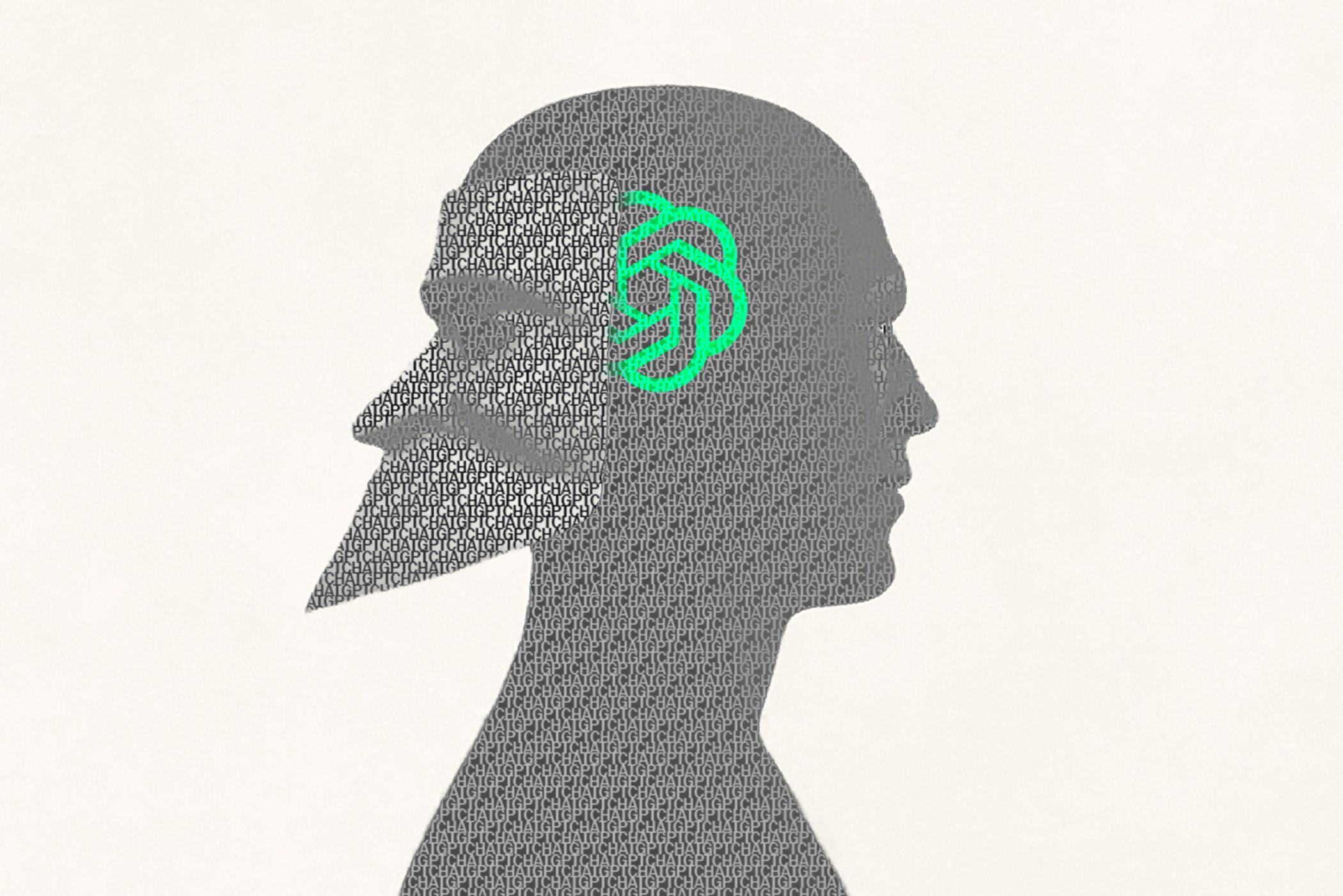
Related
How Well Does ChatGPT Know You? These 5 Prompts Find Out
It’s not just small talk—your data sticks.
ChatGPT’s image analysis is both intriguing and terrifying. Imagine what someone with bad intentions could dig up about you, just by running your Instagram stories through ChatGPT and letting its Deep Research mode connect the dots with your name. Let’s hope none of us ever find out firsthand.
